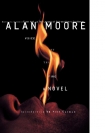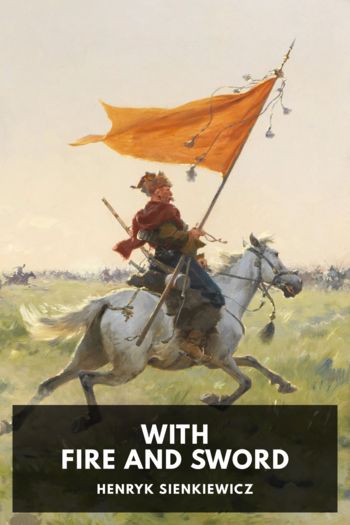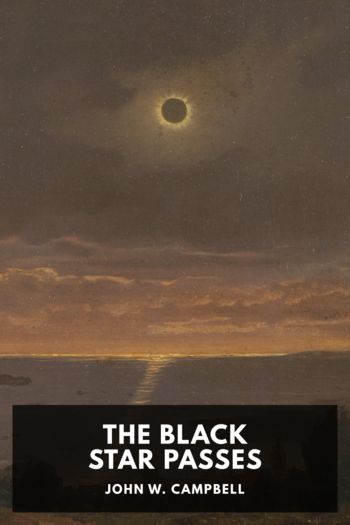Voice of the Fire, Alan Moore [year 2 reading books .TXT] 📗

- Author: Alan Moore
Book online «Voice of the Fire, Alan Moore [year 2 reading books .TXT] 📗». Author Alan Moore
Splash on, rounding the front of All Saint’s with its sheltering portico. A plaque here to the memory of John Bailles, a button-maker of the sixteenth, seventeenth and eighteenth centuries, the county’s best attempt to date at a robust, no-nonsense immortality. Near six score years and ten: a long time to spend making buttons. Only zips and Velcro killed him.
The church stares with blank Anglican disdain down Gold Street’s narrow fissure; stone-faced Protestant resentment is directed at any Semitic shades remaining in this former haunt of money-lenders. In the thirteenth century it was from here that local Jews were taken out and stoned to death, accused of sacrificing Christian babies in the course of arcane, cabbalistic rites. This was among the earliest incidents of violent European anti-Semitism that were recognizable as such, the town as eager and precocious in its pogroms as it was reluctant to stop burning witches.
During World War II a bomber crashed up at the street’s top end, a great tin angel with a sucking chest wound fallen from the Final Judgement. It was drawn down inexorably by tractor beams of sympathetic magic emanating from the subterranean speakeasy that’s under Adam’s Bakery behind the church, a marvellous forgotten space designed to reproduce the shape and seating of a buried aeroplane. Imagined engine-drone above the cold flint jetstreams, the clay strato-cumulus, like calling unto like, dragging the bomber overhead into a helpless and enraptured nosedive. One lone cyclist with a broken arm after the impact knocked him from his saddle, otherwise no casualties. These streets again show their surprising and capricious mercy. One by one the townsfolk file out through the Welsh House from the burning Market Square. The cyclist rises dazed and injured from the wreckage and stares dumbstruck at Jane Russell, pouting, painted on the ruined fuselage.
From Gold Street over the dual carriageway of Horsemarket, more horse-power stampeding there now than ever, where a left turn would lead down towards the Fritz Lang horror of the Carlsberg Brewery. It was in the Copenhagen branch of this establishment that physicist Niels Bohr first formulated his axiom that all our observations of the universe can only be seen, in the last analysis, as observations of ourselves and our own processes. A haunting notion, hard to write off as the product of one Special Brew too many, and as true concerning observations of a town as when relating to the cosmos, or the hidden quanta.
Cross Horsemarket into Marefair with the unforgiving mausoleum of the Barclaycard credit control headquarters on our right. Poker-faced, its gaze concealed behind opaque black windows, it gives nothing away. Northampton, once the centre of the boot and shoe trade, that grew fat on war and saw John Clare’s long desperate hike as one more pair sold, is now the seat of Barclaycard and Carlsberg, perfect icons of the Thatcher years reflecting our new export lines: the lager lout, the credit casualty. Here we go, here we go. Here we go.
Across the street are council offices where Cromwell is reputed to have slept and dreamed the night in 1645 before he rode to Naseby and midwifed the gory breach birth of our current parliamentary democracy, the adult form still clearly warped and traumatized by this unspeakable nativity. They marched the Royalist prisoners out to Ecton afterwards and herded them into a paddock by the Globe Inn for the night before the march to London, trial, imprisonment or execution. Many of the wounded died there in the field behind the Inn. A century later William Hogarth, a recurring patron, offered to design and paint a new sign for the Globe, and changed its name to the World’s End with a depiction of the planet bursting into flames. The pub signs of the county are a secret Tarot deck, with this card the most ominous, the local theme of fire asserted in its final, terrifying aspect.
Walking on, St Peter’s church stands floodlit, golden in the last few shakes of rain, a Saxon edifice rebuilt after the Norman conquest. A funeral service was held here for Uncle Chick, a wide boy in more ways than one: black marketeer of the family, he lost a leg in later life but not his splendidly unpleasant sense of humour, nor the knowing leer of a supernal toad with diamonds in his brow. The vicar eulogized him as a decent, law-abiding man, respectable in every way. Dad and Aunt Lou kept looking at each other in bewilderment throughout the service, having no idea who he was on about.
Here too the half-wit’s vision and the beggar woman, crippled by the gate. The bones of Ragener, unearthed in an unearthly light. The brother Saints, Ragener and Edmund; their remote November graves and separate miracles.
When they found Edmund’s severed head it was protected by a fierce black dog that would not let them near. The frilled pink gums, curled back across pale yellow teeth; the murdered saint with fly-specked gaze, a mouthful of dead leaves, his hair, alive with ants: these are the icons of a secret local heraldry, the cryptic suits that mark Northampton’s deck: Flames, Churches, Heads, and Dogs.
Down Black Lion Hill, still on the path suggested by Charles Bradlaugh’s finger, to the crossroads and the bridge beyond, the ancient heart of the community, where everything began. The Shagfoals, as described by local folklore, are believed to favour crossroads or a river-bridge, sites where the fabric is stretched thinnest between our world and the hidden place beneath. The town, of course, has crystallized around these very features; and so gets no more than it deserves.
St Peter’s Way curves south from here, and to the north extends St Andrew’s Road, childhood address and western boundary of the Boroughs, this town’s oldest, strangest quarter, sprung up where the





Comments (0)